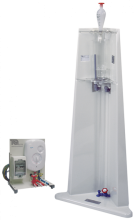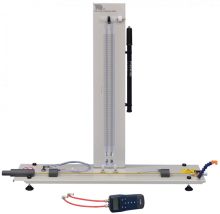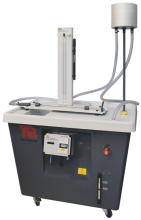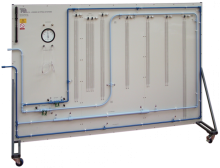Osborne-Reynolds Apparatus

Free-standing apparatus that gives a visual demonstration of laminar and turbulent flow.
The Viscosity and Particle Drag apparatus is a simple falling-sphere viscometer. The self-standing unit holds two glass tubes filled with the test fluids, for comparisons and to minismise draining and refilling of the fluids after experimentation. The back plate has a low-voltage backlight so students can easily see the test spheres through the fluid.
Students fill the two tubes with their chosen test fluid, then select a sphere of the correct density and size for the fluid. They drop the sphere into the test fluid at the top of the glass tube. They then use a stopwatch (included) to measure the time taken for the sphere to fall a set distance down the tube.
When the test sphere reaches the bottom of the tube, it enters a valve that the students turns, dropping the sphere into a collection vial for recovery. The valve system minimises the fluid loss from the tube and helps when draining the tube after the tests are complete.
Students may also make their own use shapes to test in the unit. The shapes must fit through the valve at the base (maximum 8 mm in any single dimension).
Suitable test fluids include water, thin machine oil, castor oil and motor oil. The apparatus can be used with any fluid that can be safely handled and is chemically compatible with the wetted parts of the equipment - glass and PTFE.

Free-standing apparatus that gives a visual demonstration of laminar and turbulent flow.


A bench-mounting apparatus to allow students to investigate friction losses in a small-bore horizontal pipe under laminar and turbulent flow conditions.

An apparatus to allow students to investigate the friction losses in piping systems. The large open format of the apparatus makes it ideal for students working in small or large groups.
